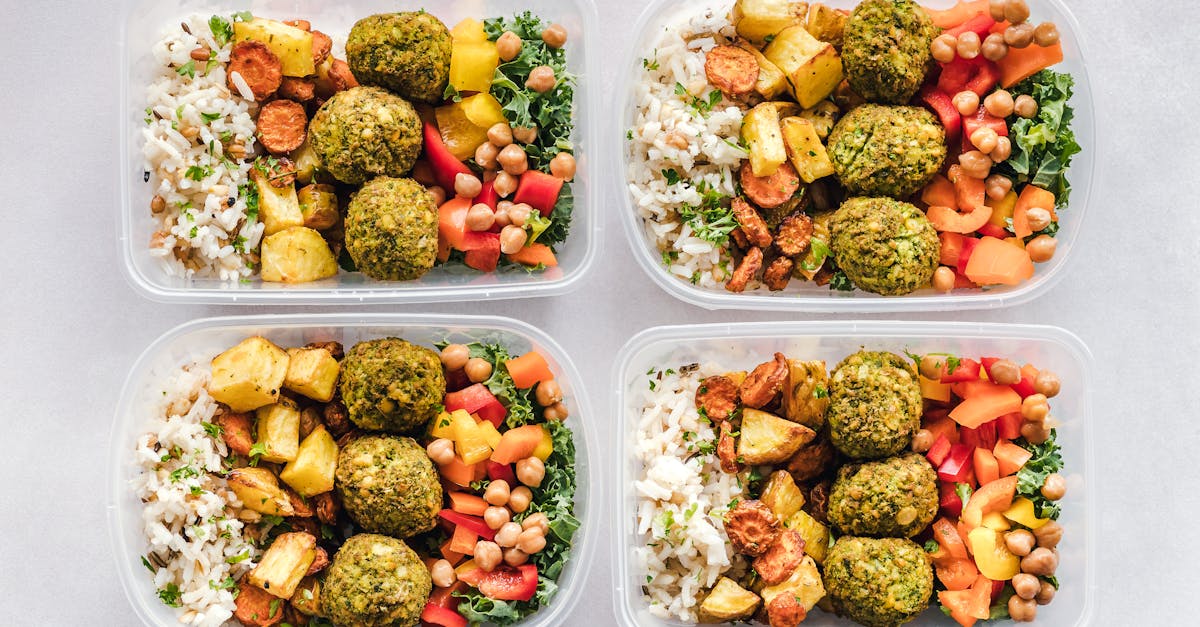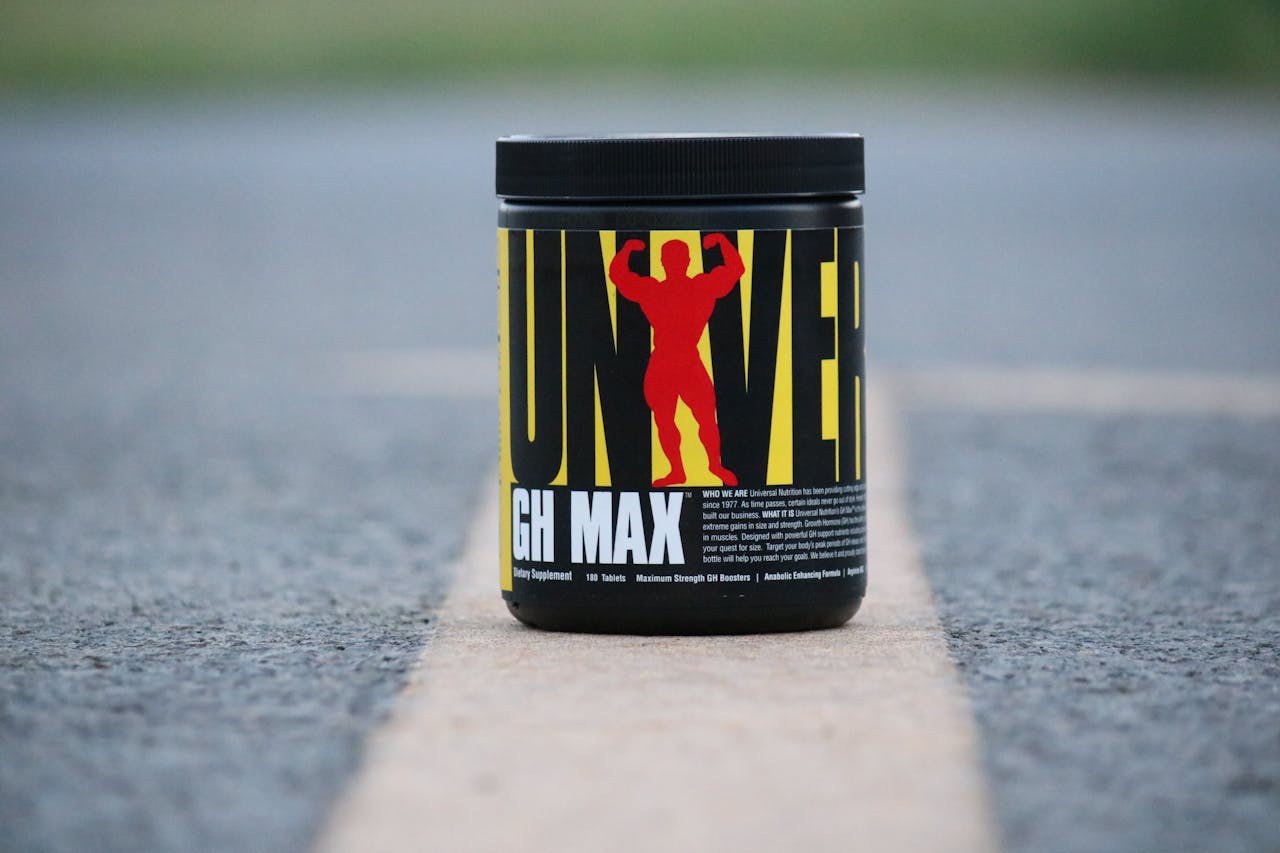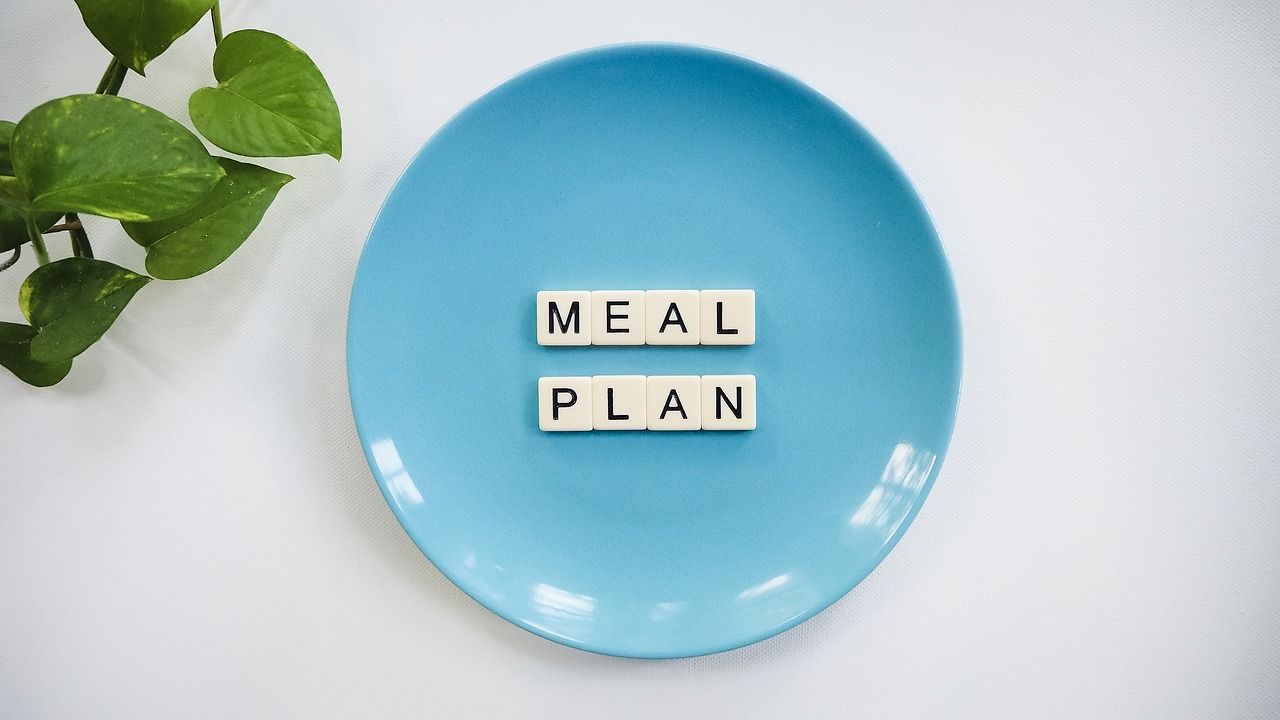Are you tired of feeling frustrated with your body shape? Do you want to lose fat and gain muscle simultaneously to achieve a toned and attractive physique?
You’re in luck! With the right combination of a meal plan and training program, you can transform your body in just 4 weeks. In this article, we’ll show you how to increase your protein intake, incorporate strength training, and make lifestyle changes to achieve your dream body. Say goodbye to stubborn fat and hello to a stronger, leaner you!
Key Takeaways:
- Body Recomposition: Focus on losing fat and gaining muscle simultaneously, rather than just losing weight. This approach can help increase strength, boost metabolism, and protect against chronic conditions.
- Meal Plan and Training Program: To achieve a toned body shape in 4 weeks, follow a meal plan that is high in protein (at least 0.64 g per lb or 1.4 g per kg of body weight) and incorporates strength training exercises to build muscle mass. Limit processed foods, reduce carbohydrates, and increase fiber intake to support fat loss.
- Proven Strategies: Increase protein intake to support muscle growth and maintenance, engage in strength training exercises to build muscle mass, and moderately decrease calorie intake to create a calorie deficit. Additionally, limit processed foods, reduce carbohydrates, and increase fiber intake to support fat loss and overall health.
Note: The article provides a comprehensive guide to body recomposition, including the importance of protein intake, strength training, and a balanced diet. It also highlights the benefits of body recomposition, such as increased strength, boosted metabolism, and protection against chronic conditions.

What is Body Recomposition?
The concept of body recomposition is often misunderstood, but it’s necessary to understand what it is and how it works to achieve your fitness goals.
Understanding Body Composition
Understanding your body composition is crucial in achieving a healthy and attractive body shape. Body composition refers to the amount of fat and fat-free mass (muscle, bone, and water) your body contains. Analyzing body composition gives a better understanding of health than other screening methods that only factor in weight and height, such as body mass index (BMI).
Debunking Common Myths About Body Recomposition
Body recomposition is often misunderstood, and many myths surround this concept. One common myth is that body recomposition is only for athletes or bodybuilders, but it’s a lifestyle that can benefit anyone looking to improve their overall health and fitness.
Another myth is that body recomposition means sacrificing weight loss for muscle gain. However, this is not true. Body recomposition focuses on decreasing body fat while simultaneously increasing muscle mass, resulting in a more toned and healthy body. It may not always result in weight loss, but it’s a more effective way to achieve overall health and fitness.
By understanding what body recomposition is and how it works, you can start making changes to your diet and exercise routine to achieve your fitness goals. Bear in mind, it’s not just about losing weight, but about gaining muscle and improving your overall health.
Sample timing for meal plan and training program to help you get started:
**Meal Plan:**
Breakfast: 8am
Snack: 11am
Lunch: 1pm
Snack: 4pm
Dinner: 8pm
**Training Program:**
Monday: Chest and Triceps
Tuesday: Back and Biceps
Wednesday: Rest day
Thursday: Legs and Shoulders
Friday: Core and Abs
Saturday and Sunday: Rest days or active recovery (e.g., yoga or light cardio
Remember to stay hydrated by drinking plenty of water throughout the day, and adjust your meal plan and training program based on your individual needs and progress.

How Does Body Recomposition Work?
It is crucial to understand how body recomposition works to achieve your goal of losing fat and gaining muscle simultaneously. It is a lifestyle that focuses on changing your body’s ratio of fat to muscle, rather than just losing weight.
Body Recomposition Basics: Hormones and Metabolism
Body recomposition is all about creating a balance between hormones and metabolism. When you focus on losing fat and gaining muscle, your body’s hormone levels and metabolism will adapt to support this change. For example, increasing your muscle mass will boost your resting metabolic rate (RMR), meaning you will burn more calories at rest.
The Role of Macronutrients in Body Recomposition
The right balance of macronutrients is crucial for body recomposition. Protein, carbohydrates, and healthy fats play important roles in supporting muscle growth and fat loss. A diet high in protein, for instance, will help you build and maintain muscle mass, while a diet low in carbohydrates can help reduce insulin levels and promote fat loss.
Basics of macronutrient balance include consuming 0.64-1.4 grams of protein per pound of body weight, 2-3 grams of carbohydrates per pound of body weight, and 0.5-1 gram of healthy fats per pound of body weight. However, these ratios may vary depending on your individual goals and needs.
How to Create a Calorie Deficit for Fat Loss and Muscle Gain
There’s a common misconception that drastically cutting calories will lead to weight loss. However, this approach can result in muscle loss as well. To create a calorie deficit for fat loss and muscle gain, you need to moderately decrease your calorie intake while increasing your protein intake and incorporating strength training into your routine.
Muscle gain requires a calorie surplus, while fat loss requires a calorie deficit. To achieve body recomposition, you need to find a balance between the two. Aim to create a daily calorie deficit of 500-1000 calories to promote fat loss while supporting muscle growth.
Bear in mind, body recomposition is a lifestyle that requires patience, dedication, and a willingness to make changes to your diet and exercise routine. By focusing on hormone balance, macronutrient balance, and calorie deficit, you can achieve your goal of losing fat and gaining muscle simultaneously.
How to Lose Fat
Now, let’s investigate the strategies for losing fat while preserving or building muscle mass.
Nutrition and Fat Loss: Eating for a Calorie Deficit
You need to create a calorie deficit to lose body fat, which can be achieved by consuming fewer calories or expending more energy. However, cutting an extreme number of calories through very low-calorie dieting or engaging in hours of cardiovascular exercise doesn’t necessarily preserve muscle mass. To lose fat while maintaining or building your physique, it’s best to moderately decrease your calorie intake while incorporating exercises that build muscle mass into your routine, such as strength training.
Other Ways to Reduce Fat Stores
Clearly, there are other ways to reduce fat stores beyond just hiking protein intake and increasing calorie expenditure. Some tried-and-true methods for losing body fat include:
It’s vital to limit processed foods, reduce carbohydrates (especially sugary carbs), and increase fiber intake. Eating more fiber-rich foods, such as vegetables and beans, can help decrease body fat, especially in the belly area. Moderately decreasing your calorie intake, limiting processed foods, and increasing protein and fiber intake are the best ways to lose fat while preserving muscle mass.
How to Gain Muscle
Once again, it’s vital to remember that gaining muscle is just as important as losing fat when it comes to achieving your desired body shape. Focusing solely on diet and neglecting exercise habits may result in a loss of muscle mass.
The Importance of Protein for Muscle Growth and Repair
If you’re trying to build muscle, the right diet is critical. A balanced diet rich in whole foods, such as fresh produce, healthy fats, complex carbohydrates, and protein, is best for everyone, regardless of fitness goals. Individuals trying to reform their body composition may need to focus on bumping up their protein intake, as studies have shown that a high protein diet is necessary for promoting muscle growth.

Best Exercises for Gaining Muscle
Importance of strength training cannot be overstated when it comes to gaining muscle. Incorporating exercises that work multiple muscle groups at once, such as squats, deadlifts, and bench press, can help you build muscle more efficiently.
Gain muscle mass by incorporating compound exercises into your workout routine. These exercises work multiple muscle groups at once, which can help you build muscle more efficiently. Some examples of compound exercises include:
- Squats: Works your legs, glutes, and core muscles.
- Deadlifts: Works your legs, glutes, back, and core muscles.
- Bench Press: Works your chest, shoulders, and triceps.
- Rows: Works your back, shoulders, and biceps.
Remember to start with lighter weights and gradually increase the weight as you become stronger. It’s also important to give your muscles time to rest and recover between workouts.
Here’s an example of a 4-day workout routine that can help you gain muscle:
- Day 1: Chest and Triceps
- Bench Press (3 sets of 8-12 reps)
- Incline Dumbbell Press (3 sets of 10-15 reps)
- Tricep Pushdown (3 sets of 12-15 reps)
- Overhead Dumbbell Extension (3 sets of 12-15 reps)
- Day 2: Back and Biceps
- Deadlifts (3 sets of 8-12 reps)
- Bent-Over Barbell Rows (3 sets of 8-12 reps)
- Dumbbell Bicep Curls (3 sets of 10-15 reps)
- Hammer Curls (3 sets of 10-15 reps)
- Day 3: Rest Day
- Day 4: Legs and Shoulders
- Squats (3 sets of 8-12 reps)
- Leg Press (3 sets of 10-15 reps)
- Standing Military Press (3 sets of 8-12 reps)
- Lateral Raises (3 sets of 10-15 reps)
- Day 5: Rest Day
- Day 6: Chest and Triceps
- Bench Press (3 sets of 8-12 reps)
- Incline Dumbbell Press (3 sets of 10-15 reps)
- Tricep Pushdown (3 sets of 12-15 reps)
- Overhead Dumbbell Extension (3 sets of 12-15 reps)
- Day 7: Rest Day
Remember to rest for 60-90 seconds between sets and adjust the weights and reps based on your fitness level. Consistency and patience are key to achieving your fitness goals.
Adjust the weights and reps based on your fitness level and goals. It’s also important to incorporate rest days into your workout routine to allow your muscles to recover.
In addition to a workout routine, a meal plan that is high in protein and calories can help support muscle growth. Aim to consume 1-1.5 grams of protein per pound of body weight daily, and make sure to eat a caloric surplus to support muscle growth.
Here’s an example of a meal plan that can help you gain muscle:
- Breakfast: 3 whole eggs, 2 egg whites, 2 slices of whole wheat toast, and a banana
- Snack: Greek yogurt with berries and almonds
- Lunch: Grilled chicken breast with brown rice and steamed vegetables
- Snack: Apple slices with peanut butter
- Dinner: Grilled salmon with sweet potato and green beans
- Before Bed Snack: Casein protein shake with almond milk and a scoop of peanut butter
Remember to stay hydrated by drinking plenty of water throughout the day. Also, make sure to get enough sleep (7-9 hours) to allow your muscles to recover and grow.
Factors Affecting Body Recomposition
Not everyone will achieve the same results when it comes to body recomposition. Several factors can influence your ability to lose fat and gain muscle simultaneously. Understanding these factors is crucial to creating a personalized plan that works best for you.
Hormonal Factors: Insulin, Cortisol, and Testosterone
Even small changes in hormone levels can significantly impact your body composition. Hormones such as insulin, cortisol, and testosterone play a crucial role in regulating fat loss and muscle gain.
- Insulin resistance can lead to increased fat storage and decreased fat loss.
- Cortisol, often referred to as the “stress hormone,” can promote belly fat storage and muscle breakdown.
- Testosterone, imperative for muscle growth and maintenance, can be affected by factors such as age, diet, and exercise.
Assume that hormonal imbalances can hinder your progress, and consult with a healthcare professional if you suspect any hormonal issues.
Genetic Factors: How Your Genes Impact Body Recomposition
Little do people know that genetic factors can influence their body composition. While genetics cannot be changed, understanding their impact can help you create a more effective plan.
- Genetic predisposition to certain body types, such as ectomorph, mesomorph, or endomorph, can affect your ability to lose fat and gain muscle.
- Genetic variations in genes related to metabolism, hormone regulation, and muscle growth can influence your response to diet and exercise.
Perceiving your genetic limitations can help you set realistic goals and adjust your strategy accordingly.
Body composition is also influenced by genetic factors, such as muscle fiber type and distribution. For example, individuals with a higher proportion of fast-twitch muscle fibers may be more prone to gaining muscle mass.
- Muscle fiber type can affect your response to different types of exercise, such as strength training or endurance training.
- Genetic variations in genes related to muscle growth and development can influence your ability to build muscle.
Perceiving your genetic limitations can help you set realistic goals and adjust your strategy accordingly.
Environmental Factors: Sleep, Stress, and Recovery
To achieve optimal body recomposition, you must consider environmental factors that can impact your progress.
- Sleep quality and duration can affect hormone regulation, muscle recovery, and fat loss.
- Stress levels can influence cortisol levels, leading to increased belly fat storage and muscle breakdown.
- Recovery techniques, such as foam rolling and stretching, can aid in muscle recovery and growth.
Recognizing the importance of environmental factors can help you create a more comprehensive plan that addresses these critical components.
This is why it’s imperative to prioritize sleep, manage stress levels, and incorporate recovery techniques into your routine. By doing so, you’ll be better equipped to support your body’s natural ability to lose fat and gain muscle.
- Aim for 7-9 hours of sleep each night to support hormone regulation and muscle recovery.
- Engage in stress-reducing activities, such as yoga or meditation, to minimize cortisol levels.
- Incorporate recovery techniques, such as foam rolling and stretching, into your daily routine.
Recognizing the importance of environmental factors can help you create a more comprehensive plan that addresses these critical components.
Tips for Successful Body Recomposition
Keep in mind that body recomposition is a journey that requires patience, dedication, and consistency. Here are some tips to help you achieve successful body recomposition:
- Set specific and achievable goals: Define your goals and create a plan to achieve them. Break down your long-term goals into smaller, manageable tasks to help you stay focused and motivated.
- Track your progress: Regularly track your body fat percentage, weight, and measurements to monitor your progress. Use progress photos and measurements to track visual changes.
- Stay consistent: Consistency is key to achieving successful body recomposition. Stick to your workout and nutrition plan, and avoid making drastic changes.
- Get enough sleep: Adequate sleep is vital for muscle recovery and growth. Aim for 7-9 hours of sleep per night.
- Stay hydrated: Drink plenty of water throughout the day to help with muscle recovery and growth.
Any deviation from your plan can hinder your progress, so it’s vital to stay committed and focused on your goals.
Setting Realistic Goals and Tracking Progress
There’s no one-size-fits-all approach to body recomposition. Set realistic goals based on your current fitness level, body composition, and lifestyle. Track your progress regularly to monitor your success and make adjustments to your plan as needed.
Creating a Support System for Accountability
One of the most significant factors in achieving successful body recomposition is having a support system in place. Surround yourself with like-minded individuals who share your goals and can provide motivation and accountability.
Systematically, having a support system can help you stay on track with your workout and nutrition plan. Share your goals with a friend or family member and ask them to hold you accountable. You can also join a fitness community or hire a personal trainer to provide guidance and support.
Staying Motivated and Overcoming Plateaus
Any successful body recomposition journey will encounter plateaus. Stay motivated by celebrating small victories, rewarding yourself for milestones achieved, and reminding yourself why you started in the first place.
Creating a vision board or writing down your goals can help you stay focused and motivated. Additionally, try new exercises, workouts, or nutrition plans to avoid boredom and prevent plateaus.
Remember to adjust the meal plan and training program based on your individual needs and goals. Consult with a healthcare professional or registered dietitian to create a personalized plan.
Nutrition Strategies for Body Recomposition
Your nutrition plan plays a crucial role in achieving body recomposition. A well-structured diet can help you lose fat and gain muscle simultaneously. Here are some proven nutrition strategies to support your body recomposition goals.

Macronutrient Cycling for Optimal Fat Loss and Muscle Gain
Optimal macronutrient cycling involves alternating periods of high-calorie intake with periods of low-calorie intake to promote fat loss and muscle gain. This approach helps to keep your metabolism guessing, preventing plateaus and ensuring consistent progress. For example, you can follow a high-calorie diet for 2-3 days, followed by a low-calorie diet for 2-3 days.
Meal Planning and Prep for Busy Individuals
One of the biggest challenges of body recomposition is finding time to plan and prepare healthy meals. To overcome this, focus on meal prep and planning on the weekends or one day a week. Prepare a batch of protein-rich foods like chicken, fish, or eggs, and pair them with complex carbohydrates like brown rice, quinoa, or sweet potatoes. Add some healthy fats like avocado, nuts, or seeds to your meals for added nutrition.
Cycling through different protein sources and vegetables can help keep your diet interesting and prevent boredom. For example, you can have chicken and broccoli on Monday, salmon and sweet potatoes on Tuesday, and turkey and avocado on Wednesday. This approach ensures you’re getting a balanced diet while saving time during the week.
How to Eat for Muscle Recovery and Growth
Body recomposition requires a focus on muscle recovery and growth. To support this, prioritize a post-workout meal or snack that includes a mix of carbohydrates and protein within 30-60 minutes after your workout. This helps to replenish energy stores, reduce muscle soreness, and promote muscle growth.
Loss of muscle mass can be a major setback in body recomposition. To prevent this, focus on consuming 1.1-1.4 grams of protein per kilogram of body weight daily, spread across 3-5 main meals and 2-3 snacks. Additionally, include complex carbohydrates like whole grains, fruits, and vegetables in your diet to provide energy for your workouts and support muscle growth.
Keep in mind, body recomposition requires patience, consistency, and a well-structured diet. Focus on making sustainable lifestyle changes that promote fat loss and muscle gain, rather than seeking quick fixes or fad diets. With time and effort, you can achieve your desired body shape and enjoy the many benefits of body recomposition.
Workout Routines for Body Recomposition
Keep in mind that a well-structured workout routine is crucial for achieving body recomposition. A combination of strength training and cardio exercises will help you lose fat and gain muscle simultaneously.
Creating a Workout Split for Optimal Muscle Growth
An effective workout split should target all major muscle groups, including chest, back, shoulders, legs, and arms. Aim to train each muscle group 3-4 times per week, with at least one day of rest in between. For example, you can do chest and triceps on Monday, back and biceps on Tuesday, legs on Wednesday, and shoulders and abs on Thursday.
Incorporating Cardio for Fat Loss and Improved Insulin Sensitivity
An crucial component of body recomposition is incorporating cardio exercises to burn fat and improve insulin sensitivity. Aim to do at least 15-20 minutes of moderate-intensity cardio, such as jogging, cycling, or swimming, 2-3 times per week.
Workout routines that incorporate High-Intensity Interval Training (HIIT) have been shown to be particularly effective for fat loss and improving insulin sensitivity. For example, you can do 30 seconds of burpees followed by 30 seconds of rest, and repeat for 15-20 minutes.
How to Incorporate Progressive Overload for Continued Muscle Gain
Loss of muscle mass can occur if you’re not challenging your muscles enough. To avoid this, incorporate progressive overload into your workout routine. This means gradually increasing the weight, reps, or sets over time to continue challenging your muscles.
Sensitivity to progressive overload is key to continued muscle gain. For example, if you’re doing 3 sets of 10 reps of bench press, try increasing the weight by 2.5lbs every two weeks, or adding an extra rep or set. This will continue to challenge your muscles and promote growth.
Remember to always warm up before your workouts, and rest for 1-2 minutes between sets. It’s also important to listen to your body and adjust your workout routine as needed. With consistency and patience, you can achieve your body recomposition goals in just 4 weeks!
Supplements to Promote Body Recomposition
All successful body recomposition journeys require a combination of proper nutrition, consistent training, and strategic supplementation. While supplements shouldn’t replace a healthy diet and regular exercise, they can help accelerate your progress and support your body’s ability to lose fat and gain muscle simultaneously.

Protein Powder and Creatine: The Ultimate Body Recomposition Stack
Stacking protein powder and creatine is a powerful way to support muscle growth and recovery. Protein powder provides your body with the necessary building blocks to repair and build muscle tissue, while creatine increases your muscle’s ability to generate energy during high-intensity exercises. This stack is imperative for anyone looking to gain muscle and lose fat at the same time.
Branched-Chain Amino Acids (BCAAs) for Muscle Recovery and Growth
If you’re pushing yourself to the limit in the gym, BCAAs can help reduce muscle soreness and fatigue. BCAAs, consisting of leucine, isoleucine, and valine, are three imperative amino acids that play a crucial role in muscle growth and recovery. By supplementing with BCAAs, you can promote muscle protein synthesis, reduce muscle breakdown, and accelerate recovery.
For instance, a study published in the Journal of the International Society of Sports Nutrition found that BCAA supplementation increased muscle protein synthesis and reduced muscle soreness in athletes after intense exercise. By incorporating BCAAs into your supplement routine, you can optimize your muscle-building efforts and accelerate your body recomposition progress.
How to Choose the Right Supplements for Your Body Recomposition Goals
With so many supplements on the market, it can be overwhelming to choose the right ones for your body recomposition goals. When deciding on supplements, look for products that are backed by scientific research and contain clinically effective dosages. Additionally, consider your individual needs and goals, and choose supplements that align with your specific requirements.
Growth hormone boosters, for example, can help increase muscle growth and fat loss, while fat burners can enhance your body’s ability to burn fat for energy. By choosing supplements that align with your goals, you can optimize your body recomposition progress and achieve the results you desire.
Keep in mind, supplements should always be used in conjunction with a healthy diet and regular exercise. Always consult with a healthcare professional before adding new supplements to your routine.
Common Mistakes to Avoid
Unlike many other fitness goals, body recomposition requires a delicate balance of diet and exercise. Making mistakes can hinder your progress and even lead to negative consequences. Here are some common mistakes to avoid:
Overtraining and Under-Recovery: The Recipe for Disaster
With the enthusiasm to achieve your goal, you may be tempted to push yourself too hard. However, overtraining can lead to fatigue, injury, and even muscle loss. Make sure to listen to your body and allow for adequate rest and recovery time.
Not Eating Enough Protein for Muscle Growth and Repair
Even if you’re eating a lot, if you’re not consuming enough protein, you won’t be able to build and repair muscle tissue. Aim to consume at least 0.64 grams of protein per pound of body weight daily, spread out over 3-5 meals. Additionally, avoid relying on supplements alone to meet your protein needs. Instead, focus on whole foods like lean meats, fish, eggs, dairy, and plant-based options like legumes, nuts, and seeds. A well-balanced diet with adequate protein will help you build strong, lean muscle mass.
Failing to Track Progress and Adjust Your Strategy
Any successful body recomposition journey requires regular progress tracking and adjustments. Take body measurements, track your weight, and monitor your body fat percentage regularly. Use this data to adjust your diet and exercise plan as needed. Muscle gain and fat loss take time, so be patient and don’t get discouraged if you don’t see immediate results. Stay consistent, and with time, you’ll start to notice significant changes in your body composition. Do not forget, **progress over perfection** is the key to achieving your goal. By avoiding these common mistakes, you’ll be well on your way to achieving a strong, lean, and healthy body in just 4 weeks. Stay committed, and you’ll be amazed at the transformation you can achieve!

How to Stay Motivated and Overcome Obstacles
After starting your body recomposition journey, it’s crucial to stay motivated and overcome obstacles that may hinder your progress. Here are some strategies to help you achieve your goals:
Creating a Positive Mindset for Body Recomposition Success
Little by little, your mindset plays a significant role in your body recomposition journey. Focus on progress, not perfection. Celebrate small victories, and don’t be too hard on yourself when you encounter setbacks. Believe in your ability to make positive changes, and remind yourself why you started this journey in the first place.
Overcoming Self-Doubt and Staying Accountable
Staying accountable is crucial to achieving your body recomposition goals. Share your goals with a friend or family member and ask them to hold you accountable. You can also join a fitness community or hire a personal trainer to provide support and motivation.
Accountable to yourself and others, you’ll be more likely to stick to your workout routine and meal plan. Additionally, track your progress by taking body measurements, weight, and progress photos. Seeing your progress will help boost your confidence and motivation.
How to Celebrate Small Wins and Stay Motivated
While it’s crucial to set long-term goals, celebrating small wins along the way can help you stay motivated. Reward yourself for reaching milestones, such as completing a challenging workout or reaching a new personal best.
Body recomposition is a journey, not a destination. Focus on the process, and celebrate the small victories that will ultimately lead you to your desired body shape. By staying motivated and overcoming obstacles, you’ll be more likely to achieve your goals and maintain a healthy, attractive body shape.
Recall, consistency and patience are key. Stay committed to your workout routine and meal plan, and you’ll be on your way to achieving your body recomposition goals.
Advanced Techniques for Body Recomposition
Despite the importance of a well-balanced diet and regular exercise, there are additional techniques that can help you achieve your body recomposition goals more efficiently. Here are some advanced techniques to consider:
- Intermittent Fasting for Improved Insulin Sensitivity and Fat Loss
- Blood Flow Restriction Training for Enhanced Muscle Growth
- Electrostimulation for Improved Muscle Recovery
| Technique | Benefits |
|---|---|
| Intermittent Fasting | Improved insulin sensitivity, increased fat loss, and enhanced autophagy |
| Blood Flow Restriction Training | Increased muscle growth, improved muscle endurance, and enhanced metabolic response |
| Electrostimulation | Improved muscle recovery, increased muscle strength, and enhanced muscle growth |
Intermittent Fasting for Improved Insulin Sensitivity and Fat Loss
Little do people know that intermittent fasting can be a powerful tool for improving insulin sensitivity and enhancing fat loss. By restricting your eating window, you can increase your body’s ability to burn fat for energy, leading to improved body composition.
Blood Flow Restriction Training for Enhanced Muscle Growth
Improved blood flow restriction training is a technique that involves restricting blood flow to your muscles during exercise. This can lead to increased muscle growth, improved muscle endurance, and enhanced metabolic response.
Body recomposition requires a combination of proper nutrition and effective training techniques. Blood flow restriction training can help you achieve your muscle-building goals more efficiently.
How to Incorporate Electrostimulation for Improved Muscle Recovery
Improved electrostimulation is a technique that involves using electrical impulses to stimulate muscle contractions. This can help improve muscle recovery, increase muscle strength, and enhance muscle growth.
Plus, electrostimulation can be used in conjunction with other training techniques, such as blood flow restriction training, to further enhance muscle growth and recovery.
Be mindful of, incorporating these advanced techniques into your body recomposition routine requires careful planning and execution. Always consult with a healthcare professional or certified trainer before starting any new exercise or nutrition program.
Putting it All Together: A 4-Week Body Recomposition Plan
To achieve your desired body shape in just 4 weeks, you need to combine a well-structured workout routine with a tailored meal plan. Here’s a sample plan to help you get started:
Sample Workout Routine for Weeks 1-2
One of the most effective ways to lose fat and gain muscle simultaneously is to focus on strength training exercises. For weeks 1-2, aim to do 3-4 sets of 8-12 reps for each exercise, with a 60-90 second rest period between sets. Your workout routine should include exercises like squats, deadlifts, bench press, rows, and lunges.
Remember to start with lighter weights and gradually increase the weight as your body adapts. It’s also necessary to warm up before each workout and cool down afterwards to prevent injuries.
Sample Meal Plan for Weeks 1-2
Even with a great workout routine, a poor diet can hinder your progress. For weeks 1-2, focus on consuming a high-protein diet with a caloric deficit of 500 calories per day. Aim to eat 1.6-2.2 grams of protein per kilogram of body weight, spread across 5-6 meals per day.
Weeks 1-2 Meal Plan Example:
* Breakfast: 3 whole eggs, 2 egg whites, 2 slices of whole wheat toast, and a cup of oatmeal (400 calories, 35g protein) * Snack: Greek yogurt with berries and nuts (200 calories, 20g protein) * Lunch: Grilled chicken breast with brown rice and steamed vegetables (500 calories, 40g protein) * Snack: Apple slices with almond butter (150 calories, 8g protein) * Dinner: Grilled salmon with quinoa and roasted vegetables (500 calories, 35g protein) * Snack (before bed): Cottage cheese with cucumber slices (200 calories, 25g protein)
Remember to stay hydrated by drinking at least 8-10 glasses of water per day.

Sample Workout Routine for Weeks 3-4
Meal planning is crucial, but so is progressive overload. For weeks 3-4, increase the weight or reps in your workout routine to challenge your muscles further. You can also add more exercises like leg press, shoulder press, and bicep curls to your routine.
Remember to listen to your body and rest when needed. It’s also necessary to stretch after each workout to prevent muscle soreness.
Sample Meal Plan for Weeks 3-4
To further boost your muscle growth and fat loss, make some adjustments to your meal plan for weeks 3-4. Increase your protein intake to 2.3-3.1 grams per kilogram of body weight, and add more complex carbohydrates like sweet potatoes and brown rice to your meals.
Weeks 3-4 Meal Plan Example:
* Breakfast: 4 whole eggs, 2 egg whites, 2 slices of whole wheat toast, and a cup of oatmeal (500 calories, 40g protein) * Snack: Greek yogurt with banana and nuts (250 calories, 25g protein) * Lunch: Grilled chicken breast with sweet potato and steamed broccoli (550 calories, 45g protein) * Snack: Apple slices with peanut butter (200 calories, 12g protein) * Dinner: Grilled turkey burger with brown rice and roasted vegetables (600 calories, 40g protein) * Snack (before bed): Cottage cheese with cucumber slices and a scoop of casein protein (250 calories, 30g protein)
Remember to stay consistent with your workout routine and meal plan, and you’ll be on your way to achieving your desired body shape in just 4 weeks.
Important Reminders: * Consult with a doctor or a certified nutritionist before starting any new diet or workout routine. * Make sure to warm up before each workout and cool down afterwards to prevent injuries. * Stay hydrated by drinking at least 8-10 glasses of water per day. * Listen to your body and rest when needed. * Be consistent with your workout routine and meal plan to achieve your desired body shape.
To wrap up
Ultimately, achieving the best body shape in 4 weeks requires a combination of a well-structured meal plan and a consistent training program. By increasing your protein intake to at least 0.64 grams per pound of body weight and incorporating strength training into your routine, you can lose body fat and gain muscle simultaneously.
Focus on making sustainable lifestyle changes that prioritize body recomposition over traditional weight loss methods. With dedication and patience, you can achieve a toned and attractive body shape in just 4 weeks. Remember to track your progress by taking body circumference measurements and measuring body fat, rather than relying solely on the scale. By following these proven strategies, you’ll be on your way to a stronger, leaner, and healthier you.
P/s: Speaking of plan (meal plan), the most important part. Eating habit contribute majority of weight loss and fat loss result, whether you choose to exercise or not. Here I recommend you a VIP Support group which you can instantly swipe and use knowledge to burn your stubborn fat right away. This template and framework includes the information how simple this diet and exercise works, and so much more! Sign up now while it’s still pre-launch (this mind-blowing offer won’t last).





Pingback: Whey Protein and Creatine: The Only 2 Supplements You Need To Pack On More Muscle Growth and Become Stronger! - Strong Fit Life